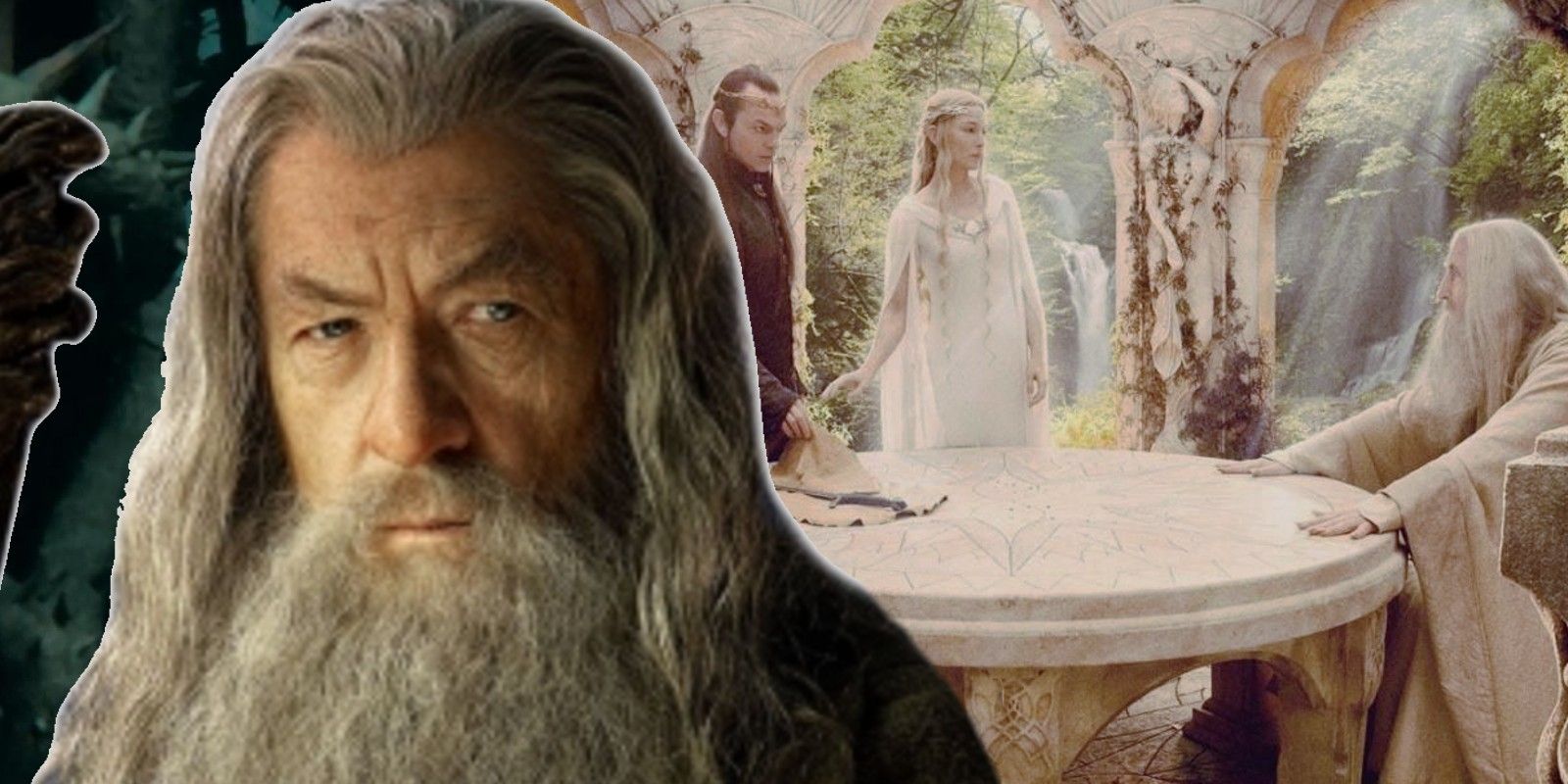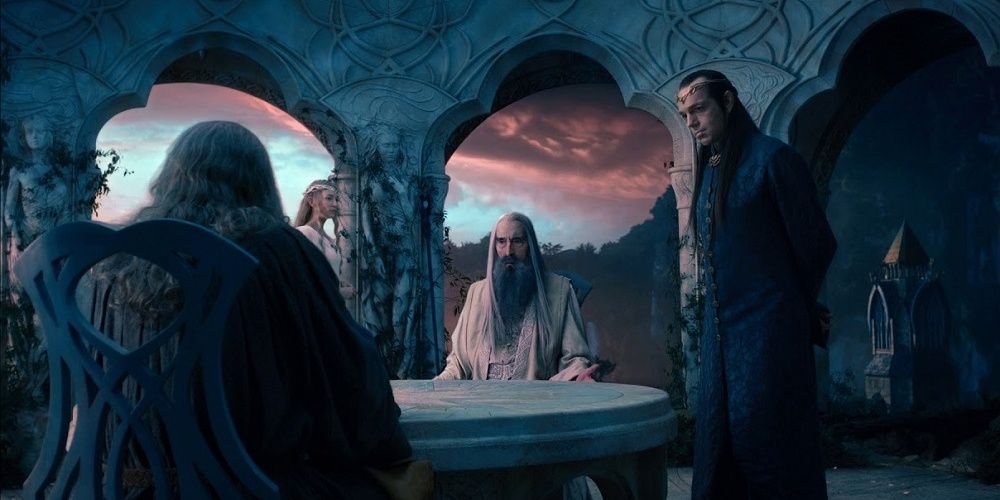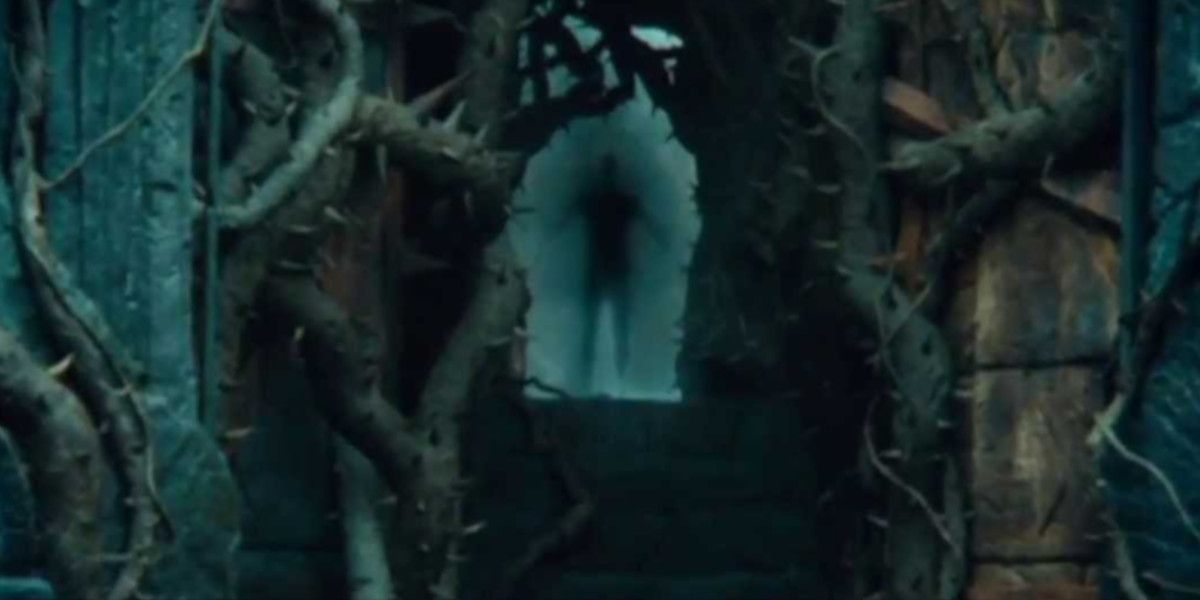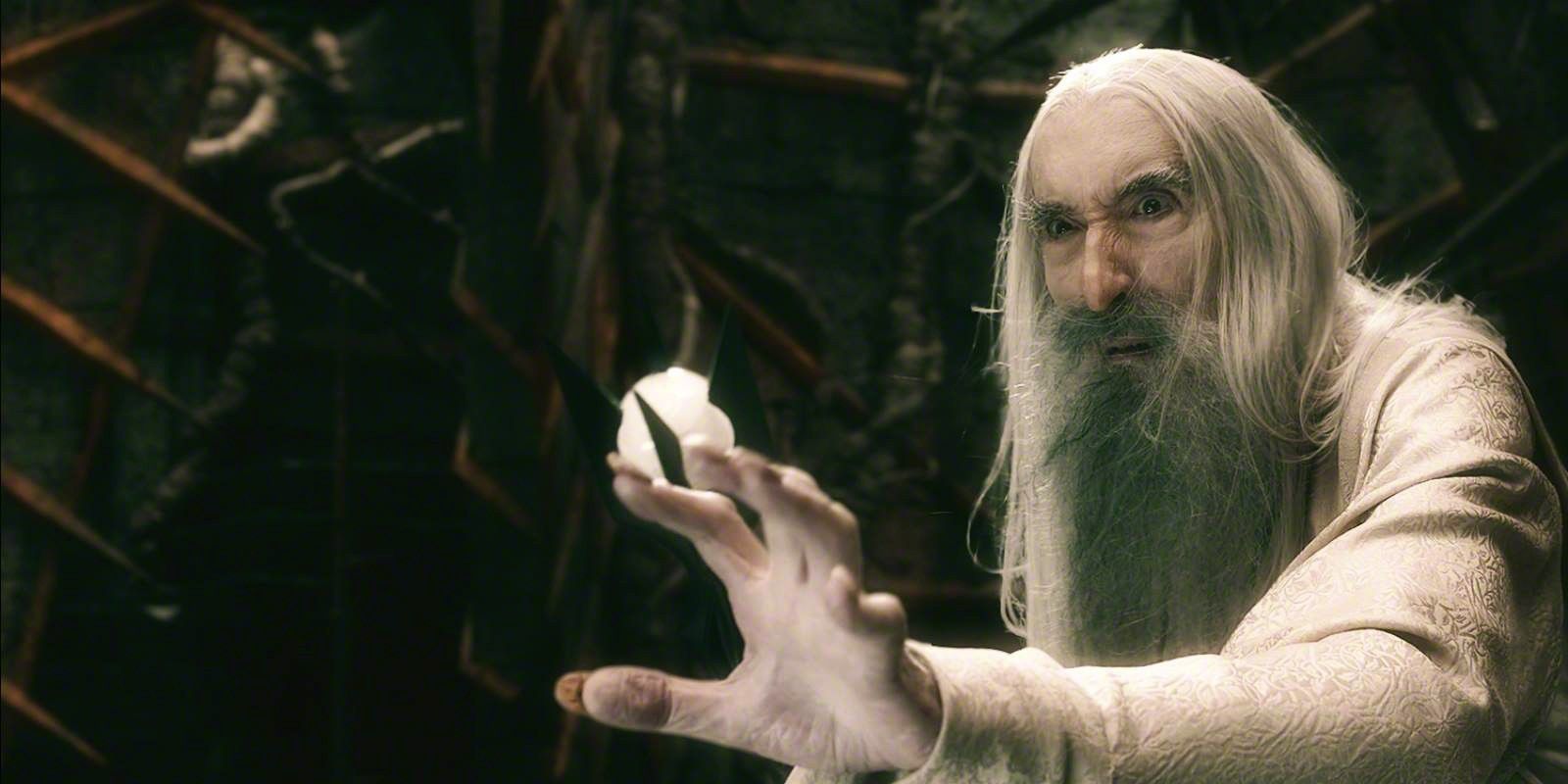
Gandalf visited Dol Guldur on two separate occasions spread apart over millennia, though what occurred in both visits was combined into one for the film. A lot occurred in Middle-earth between Gandalf’s visits, including changing allegiances and shifting opinions about what was transpiring in the ruins as news of Orc sightings were starting to spread. After Gandalf chose Bilbo to join Thorin’s company, his trek to the Lonely Mountain brought him to Gollum and the One Ring, which would cause a ripple effect of evil for many years to come, felt by only a few of the most powerful beings, and acknowledged by even fewer.
Saruman Had Already Decided He Wanted The Ring Himself

What Gandalf didn’t know at the time he warned the White Council about The Necromancer was that Saruman had already started to be corrupted by the power of the One Ring and couldn’t be trusted. Saruman wanted the ring for himself, and he wanted to spend time searching for it in other areas, not waste time exploring Dol Guldur for a possibly resurrected Sauron. Of course, he couldn’t outwardly proclaim this, and had to make up excuses instead to throw Gandalf (and the rest of the White Council) off the scent.
Saruman hoped that by Sauron continuing to do his work and call upon the One Ring, it would eventually reveal itself to its master giving Saruman the opportunity to claim it for himself. He suspected that, since Dol Guldur was near the Gladden Fields where Isildur was eventually struck down, and it would only be a matter of time until Sauron’s busywork drew it out. As the wisest and fairest of the White Council members, Saruman was chosen to lead it and therefore couldn’t be seen to play his hand in a way that compromised his integrity and leadership.
Most Lord Of The Rings Characters Believed Sauron Was Defeated

Even if Saruman had other thoughts on the matter he kept them to himself, and the other members of the White Council (and Lord of the Rings characters in general) believed Sauron to be dead after Isildur cut him down in battle. His evil hadn’t been felt for an Age, and whatever was happening in Dol Guldur was attributed to a Nazgul or some other malevolent being beside the Dark Lord, which was ideal for him. It was difficult to imagine how Sauron could have returned with the One Ring still lost and no corporeal vessel with which to find it.
Saruman searched for the ring in the Anduin River and Gladden Fields but not as Sauron’s agent, and while his interests were self-serving, they weren’t wholly evil. Saruman sought knowledge before he sought power, and he was still on the side of the light when he searched for the One Ring, more so for preventive measures than to control all of Middle-earth. Besides, it had been so long since anyone living had heard about Sauron, and the Witch-king was leading crusades of his own against Arnor, that their first thought wouldn’t be that Sauron returned from being a shapeless entity unless there was also news of the One Ring being found.
Why Saruman Changed His Mind About Attacking Dol Guldur

There were two reasons why Saruman ultimately change his mind about attacking Dol Guldur, and both reveal the complexities of his character at the time. One the one hand, Saruman was still worried about Gandalf and protecting him from Sauron’s malevolence and didn’t want his own search for the One Ring to be what led to Gandalf’s death. One the other hand, it had reached a point where Saruman could no longer refuse to go without drawing suspicion, and once he realized Sauron knew where Isildur had died, there was a danger of Sauron finding the One Ring before Saruman could get there first.
The Necromancer in The Hobbit: An Unexpected Journey was one of many ways Sauron’s greatest powers had been returning for some time, but despite the Witch-king’s maneuvers, attacks from Easterlings, and other signs, the White Council, like other denizens of Middle-earth, didn’t act until it was too late. Eventually, the damage was done, and Sauron was in the perfect position to return, and the eventual attack on Dol Guldur only succeeded in proving how strong Sauron had become. Sauron didn’t have to do anything but let hubris cloud the judgment of even the most clairvoyant beings and wait until their denial had paved the way for the perfect surprise attack.








 The Untold Story Behind TV’s Most Shocking Power Couple!
The Untold Story Behind TV’s Most Shocking Power Couple!

